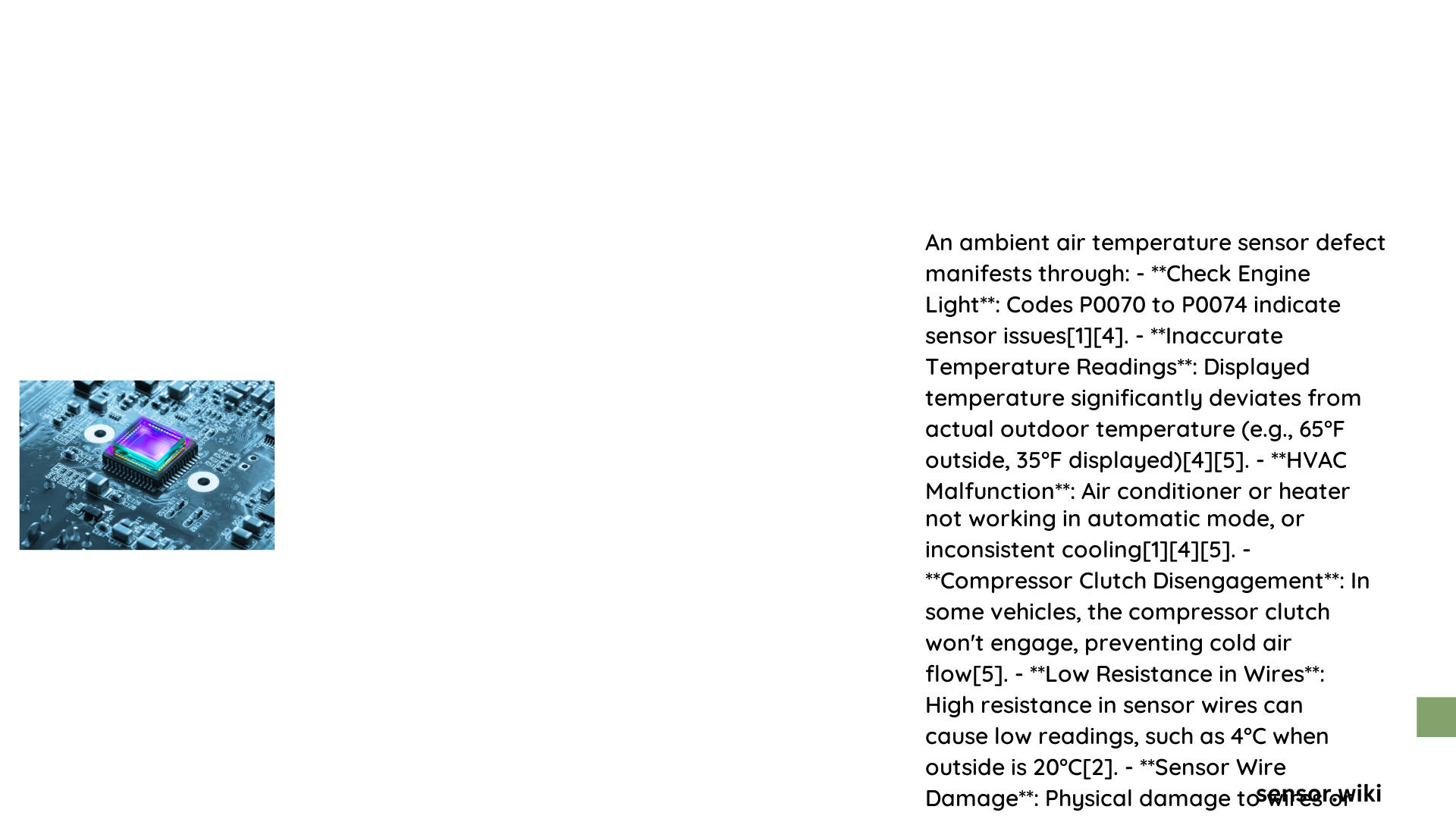Ambient sensor defects can critically compromise system performance across automotive, industrial, and electronic applications. These sophisticated electronic components are vulnerable to multiple failure mechanisms that progressively degrade their accuracy, reliability, and operational integrity. Understanding the intricate dynamics of sensor defects becomes paramount for engineers, technicians, and maintenance professionals seeking to mitigate potential system failures and optimize sensor performance.
What Are the Primary Failure Modes in Ambient Sensors?
Ambient sensors experience several distinctive failure modes that systematically impact their operational capabilities:
Electrical Failure Characteristics
- Sensor Bias Anomalies
- Unexpected output signal deviation
- Manufacturing inconsistencies
-
Environmental interference factors
-
Nonlinear Response Patterns
- Inconsistent sensitivity across measurement ranges
- Percentage deviation from ideal performance
- Potential calibration challenges
Mechanical Vulnerability Factors
- Physical stress on sensor components
- Wire connection degradation
- Mechanical shock and vibration impacts
How Do Environmental Conditions Influence Sensor Defects?

Temperature-Related Degradation
| Environmental Factor | Potential Impact | Mitigation Strategy |
|---|---|---|
| Extreme Temperatures | Accuracy Reduction | Implement Thermal Shielding |
| Humidity Exposure | Corrosion Risk | Protective Encapsulation |
| Chemical Contamination | Signal Interference | Regular Maintenance Checks |
Critical Diagnostic Considerations
Resistance and Voltage Measurement Protocols
- Resistance Verification
- Compare measured values against manufacturer specifications
- Identify potential open or short circuit conditions
-
Utilize precision multimeter for accurate assessment
-
Voltage Diagnostic Procedure
- Measure voltage between specific connector cavities
- Validate electrical signal integrity
- Check for voltage range compliance
What Are Recommended Troubleshooting Strategies?
Systematic Diagnostic Workflow
- Initial Sensor Inspection
- Visual examination for physical damage
- Check wire connection integrity
-
Verify mounting configuration
-
Electrical Performance Evaluation
- Conduct resistance measurements
- Perform voltage differential tests
-
Utilize electronic service tools
-
Data Correlation and Analysis
- Compare measured values with manufacturer specifications
- Identify potential deviation patterns
- Determine root cause of sensor malfunction
How Can Sensor Defects Be Prevented?
Proactive Maintenance Recommendations
- Implement regular calibration schedules
- Protect sensors from extreme environmental conditions
- Use high-quality, compatible connection interfaces
- Train maintenance personnel in advanced diagnostic techniques
Conclusion
Understanding ambient sensor defects requires a multifaceted approach combining technical expertise, systematic diagnostics, and proactive maintenance strategies. By recognizing potential failure modes and implementing comprehensive evaluation protocols, organizations can significantly enhance sensor reliability and system performance.
